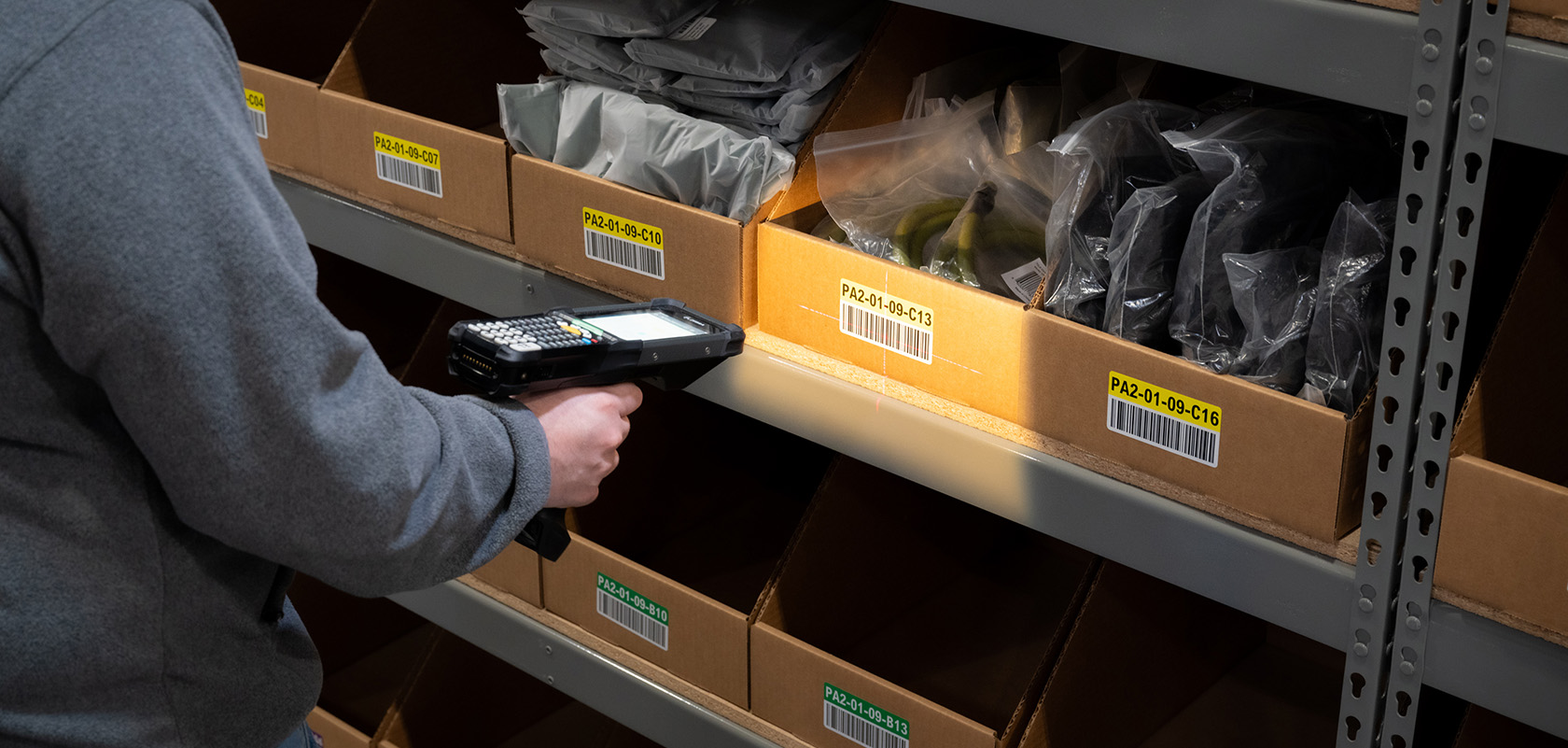Understanding E-commerce Peak Season Challenges
The e-commerce peak season, typically spanning from late fall through the new year, brings both exciting opportunities and daunting challenges. The surge in orders can provide a significant boost to revenue, but it also strains operations, testing infrastructure and fulfillment capabilities. Understanding these peak season pain points is crucial to developing effective strategies.
Inventory Management
Effective inventory management is the foundation for successful peak-season navigation. Ensuring enough stock to meet demand without tying up too much capital in excess inventory is vital. Here’s a multi-pronged approach to managing inventory during peak season:
- Demand Forecasting: Utilize historical sales data, industry trends, and forecasting algorithms/technology to predict peak-season demand accurately. This will guide inventory purchasing decisions and help maintain optimal stock levels.
- Safety Stock: Maintain a buffer of “safety stock” to cover unexpected demand spikes, ensuring a seamless customer experience.
- Supplier Coordination: Collaborate closely with suppliers to align production and shipping with projected peak season needs, and establish expedited replenishment agreements.
Order Fulfillment
Timely and accurate order fulfillment is critical during the peak season rush. Streamlining this process can directly impact customer satisfaction. While selecting the right partner ( like Standvast ) is crucial, consider the following strategies to optimize fulfillment:
- Warehouse Optimization: Analyze workflows to identify improvement opportunities. Position high-demand products near packing stations to speed up the fulfillment process.
- Order Prioritization: Develop systems to triage orders, ensuring high-value or time-sensitive shipments are processed promptly.
- Shipping Optimization: Collaborate with your fulfillment partner to optimize shipping routes, carriers, and methods for efficiency and reliability.
Customer Service
The influx of orders naturally leads to more customer inquiries, putting support teams under pressure. Preparation and proactive communication are key to maintaining service quality during peak season:
- Team Enablement: Equip your customer service team with the training and tools necessary to handle peak season inquiries efficiently, reducing resolution times and enhancing customer satisfaction.
- Proactive Communication: Keep customers informed about order status, especially in cases of delays or stockouts, to manage expectations and maintain trust.
(Fulfillment partners like Standvast help inject scales, speed, and reliability into your customer experience)
The Role of E-commerce Fulfillment Services
As previously mentioned, selecting the right fulfillment partner is critical. The right partner can provide the scalability, technology integration, and shipping expertise needed to keep operations running smoothly. Here are key factors to consider when choosing an e-commerce fulfillment service:
Scalability
Your fulfillment partner must have the capacity and agility to scale with increased order volumes during peak season.
- Capacity Planning: Ensure your partner has the necessary resources, including warehouse space and labor, to handle the expected spike in demand.
- Flexible Contracts: Look for agreements that allow you to adjust service levels easily as needed, without incurring excessive costs.
Technology Integration
Seamless integration between your systems and your partner’s is crucial for maintaining visibility and control over your operations.
- Real-Time Inventory Management: Your partner should provide a system with real-time updates on inventory, orders, and shipping status, ensuring transparency and quick decision-making.
- System Compatibility: Verify that your partner’s technology stack integrates smoothly with your existing systems, minimizing disruptions and enhancing operational efficiency.
Shipping Speed and Reliability
Shipping speed and reliability are paramount during peak season when customer expectations for fast, on-time delivery are heightened.
- Carrier Relationships: Choose a partner with strong relationships across multiple carriers to ensure quick, reliable shipping no matter where your customer is located.
- Performance Guarantees: Insist on service level agreements (SLAs) that commit to reliable delivery times and include contingency plans for potential disruptions.
Assessing Your Current Order Fulfillment Strategies
Before developing a peak season strategy, critically assess your existing order fulfillment processes to identify areas for improvement. This assessment will help you refine your approach and better prepare for the upcoming rush.
Key Performance Indicators (KPIs)
Closely monitor KPIs to gain insights into the health and effectiveness of your fulfillment operations.
- Order Accuracy Rate: High accuracy minimizes returns and enhances customer satisfaction, both of which are crucial during peak season.
- Average Delivery Time: Track order processing and delivery times to meet customer expectations for fast shipping.
- Return Rate: Analyze the reasons for returns to address recurring issues and improve your overall fulfillment process.
By analyzing these KPIs, you can ensure that your fulfillment strategy is robust and ready to handle increased order volumes during the busy season.
Inventory Management Analysis
Review past stockout and overstock situations to understand root causes and make necessary adjustments. This analysis will help you fine-tune your inventory management strategy for peak season.
Cost Analysis
Calculate your cost per order and document any unexpected costs from previous peak seasons. Understanding these expenses will allow you to budget more effectively and avoid unnecessary costs during the upcoming peak period.
Technology Evaluation
Ensure your automation tools and systems integration are up-to-date and capable of handling peak volumes. A technology audit can reveal gaps in your current setup and highlight opportunities for improvement.
By analyzing historical data and auditing your current processes, you’ll be better prepared to tackle the peak season surge in demand.
Strategies for Preparing for the E-commerce Peak Season
With a clear understanding of your operations, you can begin implementing strategies to optimize for peak season. Here are some key areas to focus on:
Optimizing Inventory Management
Advanced demand forecasting and supplier coordination are essential inventory management practices and are paramount for maintaining the right stock levels during peak season.
- Advanced Demand Forecasting: Use sophisticated tools that leverage historical data, market trends, and external factors to predict peak demand accurately. Standvast’s Composable Technology is an example of an advanced demand forecasting tool that you can incorporate into your workflow.
- Supplier Coordination: Work closely with suppliers to ensure they can meet your increased demand and establish expedited replenishment agreements to avoid stockouts.
Streamlining Order Fulfillment
Efficiency in order fulfillment is critical for managing high order volumes during peak season.
- Batch Processing: Implement batch processing for similar orders to reduce picking and packing time, improving overall efficiency.
- Cross-Docking: Move products directly from receiving to shipping, bypassing storage and reducing handling time.
- Shipping Optimization: Collaborate with your fulfillment partner to optimize shipping routes and methods, ensuring quick and cost-effective delivery. Make sure they are transparent about their routes and timelines. For example, Standvast’s ground service includes an expedited 1-2 day shipping option or 3-4 day normal shipping option.
Understanding Customer Needs
Understanding and meeting customer expectations is key to maintaining loyalty during peak season.
- Personalized Service: Use customer data to personalize the shopping experience, offering targeted promotions and recommendations based on past behavior.
- Proactive Issue Resolution: Implement systems to identify and resolve potential issues before they impact the customer experience, such as delays or stockouts.
Technology and Innovation in Peak Season Fulfillment
Leveraging the right technology can give your business a competitive edge during peak season. We touched on some of these earlier, but the right tools can guide you in the right direction.
Here are some innovative tools to consider:
Warehouse Management Systems (WMS)
A WMS provides real-time inventory updates and optimizes warehouse operations to ensure efficient order fulfillment.
- Real-Time Inventory Management: A WMS helps you avoid stockouts and overstock by providing up-to-date inventory information.
- Optimized Picking Paths: Use your WMS to create efficient picking paths, reducing retrieval time and speeding up order fulfillment.
Order Management Systems (OMS)
An OMS centralizes order processing across all sales channels, ensuring consistency and efficiency.
- Centralized Order Processing: Manage orders from multiple channels in a single, streamlined system to ensure efficient processing.
- Inventory Synchronization: Keep inventory data synchronized across all channels to prevent stockouts and ensure accurate availability information.
Demand Forecasting Software
Demand forecasting tools help you predict future demand accurately, ensuring you’re prepared for peak season.
- Machine Learning Algorithms: Use software that analyzes past data to predict future demand with high accuracy.
- Scenario Planning: Run different demand scenarios to plan for best and worst-case projections, helping you prepare for any situation.
Measuring and Reporting on Peak Season Performance
Diligently measure your performance during peak season to understand what worked, what didn’t, and how to refine your strategy for the future. Pay attention to the KPIs that you identified earlier and be sure to analyze what worked, what didn’t work and where you could improve when things get busy again.
Using Data to Improve
Post-peak season, analyze your performance data to identify areas for improvement. Data should be a driving force for all your decisions, especially during peak season.
Some ways to leverage data include:
- Identify Bottlenecks: Use data to pinpoint where delays or issues occurred, and make necessary adjustments to streamline operations.
- Continuous Improvement: Implement changes based on your findings to optimize your processes for the next peak season, ensuring that your business continues to thrive during high-demand periods.
By following these strategies and leveraging the right technology, you can ensure your e-commerce business is fully prepared to navigate the challenges of peak season successfully.
Standvast Makes Peak Season Management Easier
The right combination of technology, human capital and a strategic order fulfillment partner makes it easier for businesses like yours to manage high order volumes and stay ready for peak season. Standvast is here to help your business meet demand and maintain a strong rapport helping you create loyal customers.
Contact us today to find out more about how we tailor individualized solutions for businesses like yours

